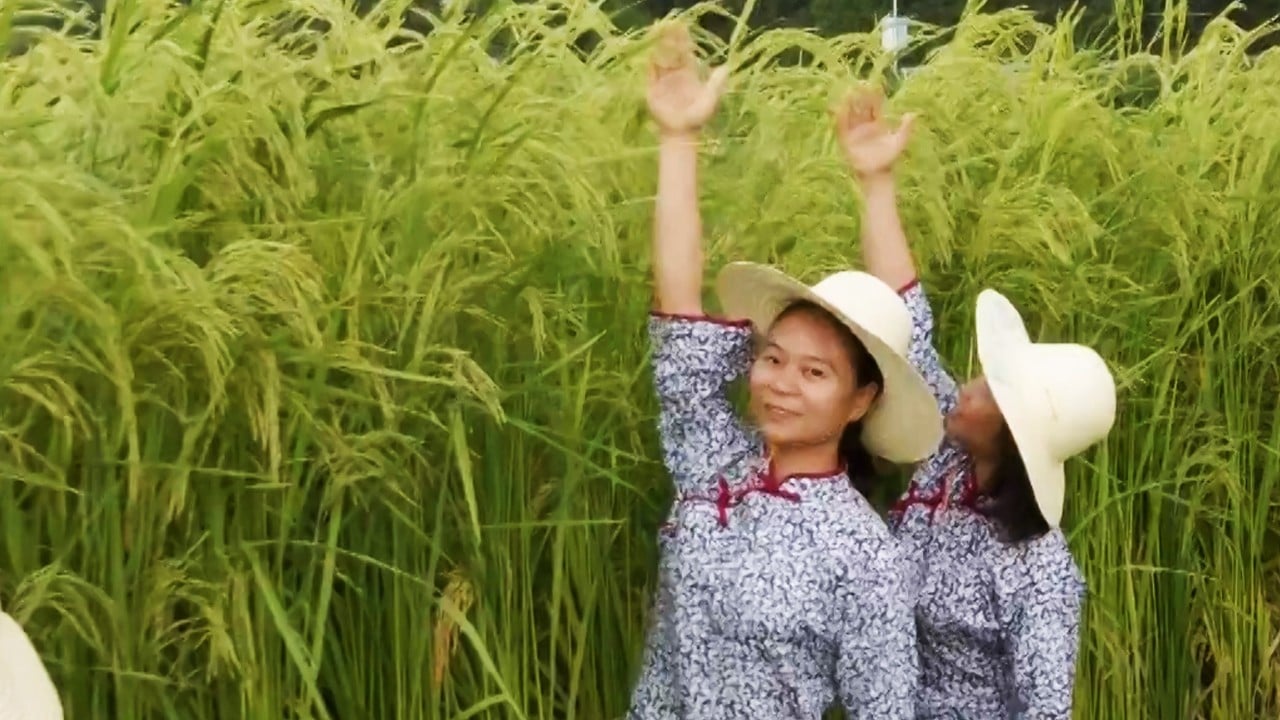Lu Xiwan, a farmer in Guangxi Zhuang autonomous region, planted 13.3 hectares of the rice variety this year and obtained a yield of 2,200-3,000kg (4,850-6,614lbs) more rice per hectare (2.5 acres) compared to previous years, according to state news agency Xinhua.
China News Service reported on August 19 that giant rice was capable of producing yields 30 per cent higher than conventional rice, reaching 9,000kg per hectare.
The giant rice variety, developed by a research team at the Chinese Academy of Sciences Institute of Subtropical Agriculture in 2017, was created with the aim of producing more rice per hectare.
The reports of high yields come as India increases duties and export bans on non-basmati rice varieties because of a poor harvest season after El Nino intensified flooding in the country.
Advertisement
Jauhar Ali, a researcher and head of the hybrid rice for industry unit at the Philippines-based International Rice Research Institute (IRRI), told the Post it was time for hybrid rice to be recognised as a way to ensure global food security.
According to the IRRI, hybrids are created when two genetically different rice parents are bred together, giving the offspring traits of both. Within one breeding cycle multiple desirable traits can be passed on.
This differs from genetically modified rice, in which foreign genes are introduced through engineering.
‘Revealing how the killer works’: Chinese team makes hybrid rice breakthrough
‘Revealing how the killer works’: Chinese team makes hybrid rice breakthrough
Advertisement
He said that despite China’s extensive history with hybrid rice, the proportion of hybrid rice grown in the country had stagnated at around 55 per cent because of increasing cultivation costs.
According to the IRRI, hybrid rice varieties can result in a yield that is 15 to 20 per cent higher than regular rice under typical growing conditions. Ali said some varieties could go as high as 30 per cent, according to recent farm surveys.
Advertisement
He said that while the Chinese rice variety “may be giant”, what mattered was whether it could convert its increased size into grain. Increasing the height of a plant can come with challenges such as longer life cycles and increased resource use.
Last October, China Daily reported that a farmer had a giant rice yield that was 1.5 times more than that of conventional rice. Ali said that if this could be replicated, it could be a “game-changer”.
What is the state of China’s food-security drive, and is it succeeding?
What is the state of China’s food-security drive, and is it succeeding?
Climate could pose a challenge to global adoption of the variety as many hybrids created to grow in non-tropical areas struggle to adapt to the tropics, according to Ali. But if the hybrid could grow while keeping the yield advantage it had in the tropics, it would be a “no-brainer that it will be adopted”, he said.
Advertisement
Hybrid technology now emphasises producing rice that is more resilient to climate change, and hybrid development centres like the IRRI focus on varieties that can withstand tropical heat, salinity, drought and flooding.
Ali said the varieties being produced had a reduced carbon footprint made possible by shortening the growth period, which reduces methane emissions and resource use.
Another obstacle to the adoption of hybrids is that some countries find it cheaper to import rice than grow it, leading them to focus on growing more economically advantageous crops, he said.
Advertisement
Ali said while progress had been “fairly slow” in the widespread adoption of hybrids, “when the food crisis comes, hybridisation will spread by default” because of the significant yield advantage.
During a press conference on August 18, Lin Xiqiang, deputy director of the China Manned Space Agency, said space-mutated seeds had increased grain output by 2.6 billion kg, bringing US$52.3 billion in direct economic benefits.
Advertisement


